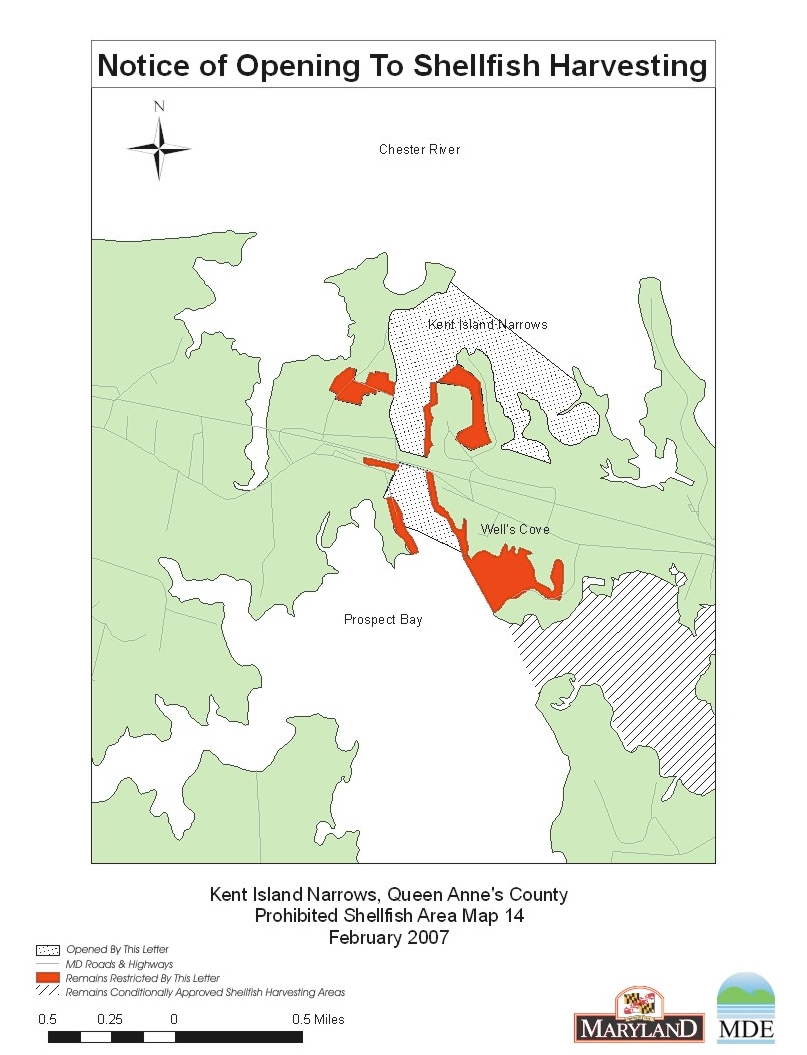BALTIMORE, MD (February 22, 2007) – The Maryland Department of Environment (MDE) will open the Kent Island Narrows to shellfish harvesting effective today, through the remainder of this year’s season, which ends March 30, 2007.
The Kent Narrows area is normally closed to harvesting during most of the year because of the high volume of boats, marinas, and onshore activities in the area with the potential to negatively impact shellfish water quality. Because boat traffic in the Narrows is typically lighter during the colder winter months, MDE typically re-opens the area’s shellfish beds during that time if environmental health standards are met.
The decision to reopen the area waters (see map) to harvesting was based on a recent review of water quality and a bacteriological analysis of shellfish from the area. Results indicated the area meets the strict requirements necessary for shellfish harvesting waters and for the direct harvest of oysters and clams. MDE had been contacted by local watermen from this area explaining that they are unable to travel far from the docks due to the recent cold snap resulting in icy conditions on the Chesapeake Bay and requesting MDE to open the area to harvesting. MDE coordinated this opening with DNR Fisheries Service.
Shellfish (oysters and clams) are filter feeders with the ability to filter water and get their food from the various microscopic organisms found in the water column. If the water is polluted, the filtering process can potentially include viruses or bacteria harmful to humans. Oysters and clams are often eaten raw or partially cooked and must come from waters that are not polluted.
MDE frequently monitors bacteriological water quality and conducts pollution source surveys to determine which areas are safe for harvesting of oysters and clams. The department is required to close areas that do not meet the strict water quality standards for shellfish harvesting waters and has a long-standing policy to open areas to shellfish harvesting when water quality improves. These actions ensure continuance of Maryland's reputation for safe and wholesome seafood products and maintain compliance with the National Shellfish Sanitation Program.
Editor’s Note
A map of the area is available below.

###